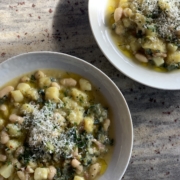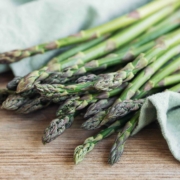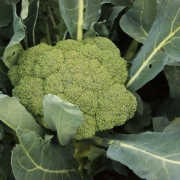Studying the benefits
An ambitious new study looks at nutrient-dense food production in New Zealand.
The content below is free to read from our Nov-Dec 2023 issue. This article is sponsored by Kete Ora Trust.
What is the best food we can eat for good human health? How is it grown and produced? What connections do New Zealanders make between the food they eat and how it is grown?
Many growers and their customers believe biodynamic and organically-grown food has specific health benefits. Kete Ora Trust is undertaking research here in Aotearoa New Zealand that compares the nutrient density of food produced in biodynamic, organic, and non-organic systems respectively. It will also investigate consumer perceptions of these different foods.
This is world-class research, firmly evidence-based, that will review and build on a handful of studies done around the world over the past 30 years. Kete Ora has commissioned Plant & Food Research Rangahau Ahumāra Kai to carry out three distinct stages of enquiry.
A review of existing studies will identify research gaps, which will inform applied research into specific topics. Kete Ora Trust is funding the first two areas of research and will invite co-sponsors for the third stage.

Why biodynamics?
Ask the people who grow biodynamic food, and those who search it out to buy it, and they’ll tell you about the full, rich flavour of the fruit and vegetables, its resistance to disease and how well it keeps. “Biodynamic food has vitality,” says Dieter Proebst, one of New Zealand’s most experienced biodynamic growers and consultants. “And that vitality is imparted to the people who eat it.
“Biodynamics treats the soil, the crops, and the animals gently. There are no tricks used to produce a crop. As an apple grower, I sought to bring out what the winemakers call terroir, the expression of all the unique characteristics of where and how that food was grown.”
Ross Vintiner of Dali Estate in Martinborough is a Kete Ora trustee and careful steward of an organic and biodynamic grove of 1100 olive trees. He’s been instrumental in establishing this research project. Ross has won major international competitions with his olive oils, which have very high levels of polyphenols, a micronutrient that helps fight diseases like cancer and heart disease. Dali’s customers pay a premium for oils of this quality.
In a biodynamic system – whether growing crops or pasture on which livestock graze – the health of the soil is inextricably linked with the health of the food it produces. The percentage of soil organic matter is a key measure of soil health. With its teeming microbial life, organic matter is vital for the transfer of nutrients between soil and plants and from there to animals, humans included. High organic matter and high microbial biomass correlate to nutrient-dense food.
Ross credits providing nutrition for soil life plus foliar feeding for significant gains in yield and quality. He doubled the kilograms of fruit, and litres of oil per tree over a five-year period, coinciding with doubling his soil’s organic matter content. In a tough drought-stricken year, when other olive growers had virtually no fruit, Dali Estate still brought in a good harvest. “That was thanks to high organic matter and an abundant leaf canopy, both resulting from careful mineral, microbe, moisture, and tree management,” says Ross.

Urgent action required
On North American farmland today, soil organic matter levels are only half of what they were at the time those lands were converted from forest and prairie into farming. Modern non-organic farming practices, particularly cultivation and the use of chemical fertilisers, have decreased and degraded soil organic matter and the life it contains. In many industrialised farming systems, soil organic matter is often as low as one percent: it should be above seven.
At the same time, measures of the nutrient density of food grown in the US show a decline of forty percent since the 1940s. It’s likely similar in most Western nations given common agricultural practices. This is despite vastly more investment in farming intensity, chemical fertilisers, and machinery during this period.
There’s a lot at stake, so gathering accurate and up-to-date global data about the impact and consequences of different production systems is vitally important. Two local production studies done in the 1990s demonstrated biodynamic and organic soils have higher biological and physical qualities compared to non-organic practices. (Physical qualities include the levels of soil organic matter, microbial activity, soil structure and root symbiosis, permeability, topsoil, and diversity.) Additionally, biodynamic and organic farms use less inputs and energy and produce less erosion and pollution.
These and other studies showed that the nutrient content of crops produced in biodynamic and organic systems varied, although compared with non-organic production, they had higher nutrient content the majority of the time.
Kete Ora’s research aims to answer questions, such as:
- What is a high nutrient-dense food? Why are high nutrient-dense foods beneficial to human health?
- Is there a difference, and if so, what is the difference in the nutrient and phytochemical content of foods grown using biodynamic methods compared with organic and conventional?
- Which compounds are influenced to a greater degree by growing practice (micronutrients, macronutrients, phytochemicals)?
- What nutrients are inputted and produced in biodynamic systems, compared to organic and non-organic systems?
- Does the microbial biomass of living soil in biodynamics, organics, and conventional growing systems influence the nutrient density of food produced?
- What crops respond best to biodynamics with respect to nutrient content?
- Which nutrients do consumers care the most about?
- What do consumers understand about biodynamics, compared to organic and conventional growing systems? What value do consumers place on biodynamic and organic food, compared with conventional food?
Kete Ora’s trustees hope answering these and other questions will assist consumers, growers and policy makers to make best choices for healthy food from the best growing systems.
More reading
More in-depth information can be found on Kete Ora’s website, including the need for the project, the questions the research seeks to answer, and details about previous scientific studies into this area.
keteora.nz/stories/research-project-launched/
Dali Estate: daliolives.co.nz
RNZ profile of Dali Estate: bit.ly/3sGNrAQ
Dieter Proebst: treedimensions.co.nz

Kete Ora Trust is a charitable organisation established in 1997 thanks to generous bequests. It invests in, and supports education and research into biodynamic, organic, and regenerative land use in Aotearoa New Zealand. Visit keteora.nz for more information. Donations to support its kaupapa are warmly invited.







